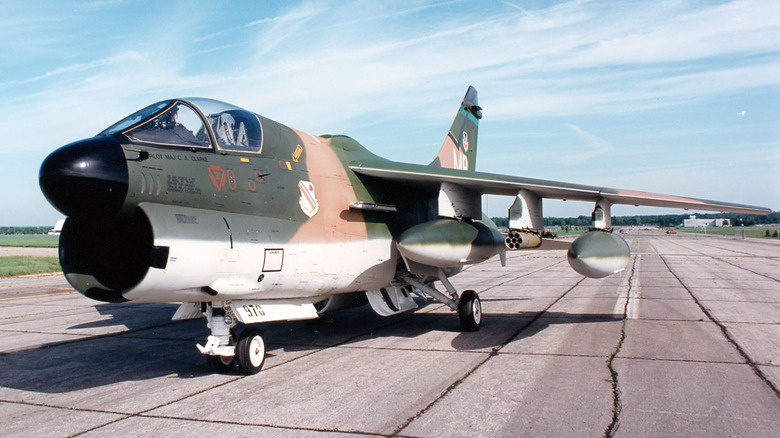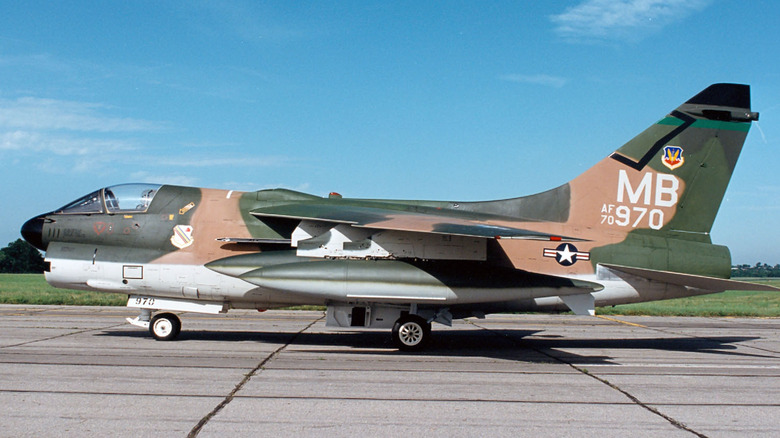The Versatile Turbofan Aircraft That Dominated During The Southeast Asia War
The A-7 Corsair II was first delivered to the United States Air Force in 1968 and continued to serve until after the first Gulf War. It first saw combat directly in the middle of the Vietnam War and the greater Southeast Asia War where it was used extensively as a ground attack jet, rescue mission defender, and even a fighter jet if the need arose. A total of 535 A-7s across all variations were produced with 459 planes delivered to the U.S.A.F. and the remaining aircraft seeing service with the U.S. Navy.
In Southeast Asia, Corsair IIs of the 354th Tactical Fighter Wing launched out of Korat Royal Thai Air Force Base in Thailand made their name known to enemy forces. For armament, the A-7 was equipped with an M61A1 "Vulcan" 20mm rotary cannon and 15,000 of whatever ordnance the Air Force or the Navy could strap to its wings or fit into the bomb bays. The powerplant was a single Allison TF41 turbofan engine that produced 14,250 pounds of thrust. According to the U.S. Navy, A-7s were used extensively in Operation Linebacker which focused bombing raids on both the Vietnamese city of Hanoi and other targets in Southeast Asia.
Serving across multiple theaters of combat
An A-7 Corsair II, flown by the late Major Colin A. Clarke on November 18, 1972, assisted in the rescue of two stranded Air Force personnel in Vietnam. Major Clarke was able to weave through incoming enemy fire from the ground and direct crews to the location of the airmen. The Corsair II's offensive capabilities allowed it to not only ensure the safety of the rescue crew and subsequently the two airmen, but it was also able to knock enemy forces out of the fight. For his efforts, Major Clarke was awarded an Air Force Cross. That specific aircraft is on display at the National Museum of the Air Force.
When hostilities ceased in Southeast Asia, the A-7 saw continued service in the Air National Guard of several states and Puerto Rico. Additionally, Corsair II fought in Panama and was part of the initial wave of bombing against Saddam Hussein's forces in Baghdad during the very first night of the first Gulf War.

